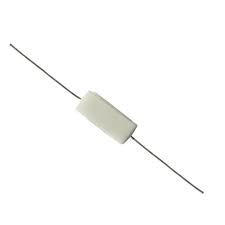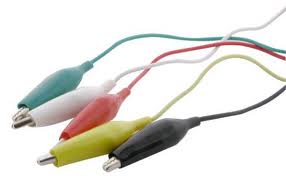WARNING: Dangerous voltages lurk inside all tube amplifiers. Injury, and even death, are possible to anyone working on the inside of the amplifier without proper precautions. Disconnect all equipment before working on it. Check high voltage capacitors with a multimeter to see if there is a charge. If there is, wait until it falls to under 10 volts, or use a large value resistor (10K, 5 watts should do) and two pairs of insulated alligator clip leads to drain the voltage. Please be careful.
 |
 |

I learned about audio by trial and error, through modifying, rebuilding, and through fixing what I broke. For many high-end buyers, this article will be useless. I don’t blame you. Similarly, I care nothing about how beer and spirits are produced, only how they taste. However, if the reader is interested in getting their hands dirty, or burned, as the case will be, I hope you will find something here that will drive your creativity. Just as some wealthy individuals like to work on their own houses and automobiles, only to become contractors, designers and manufacturers out of frustration, you might start the next great audio company, or discover some new circuit.
If necessity is the mother of invention, then Dynaco is the grandmother of the high end. Considering the many thousands of systems which still use Dynaco equipment, be it original or modified, plus the companies and careers it helped launch, I think it is safe to say that Dynaco casts a giant shadow over high end audio. You can make a case for other companies having better sounding gear, which wouldn’t be hard to do, but none produced what amounts to the Model T of audio, the ST70. Like the Model T, the first car designed and marketed for The Common Man, the ST70 made Hi-Fi sound available to many who balked at the high prices of Dynaco’s competitors. I must mention that other companies preceded Dynaco with kits, and leading transformer manufacturers sold audio transformer/inductor kits with schematics, asking the builder to build the chassis, mount tube sockets and transformers/inductors, and wire itup with the proper capacitors and resistors. However, Dynaco made things both easier and cheaper. High end sticker-shock is nothing new. The really good gear from the ‘50s and ‘60s cost a lot of money back then. You could buy a new car for $2,500. If the McIntosh 240 or Marantz 8 could’ve been purchased for $99, the price of the ST70 kit, then Mac and Marantz would be as common as dirt, or Dynaco.
I could scribe long and hard about the subject, but others have written about Dynaco, and the ST70 amp in particular. This article started off as a build-and-review of the K&K Audio ST70 retrofit/modification PC board, and gradually got out of hand. What started off as a dingy smoke damaged ST70, now houses an upgraded power transformer (Dynakit PA060) that allows for the use of the 6550 or KT88, in place of the stock EL34. Also, gone are the well respected A470 output transformers, replaced by a ‘70s era set of the much larger A431 output transformers from the Mark III mono blocks. Gone is the junky multi-section “can” capacitor, all the original octal sockets, all the connectors, the switches and the awful PC board. Aside from the sheet metal, everything is new or improved. I still feel it’s relevant though: all these various products are currently available. At the end of the review, I will add up the price for the PC boards from K&K, the upgraded power transformer, new production A431 output transformers, reproduction chassis, plus the cost of connectors and hardware. I will do so after I have finished the amplifier, and reviewed the sound. At that point, I will try to decide if the savings are worth the results.
Why not do a basic rebuild of the old circuit? Because the old circuit is just plain bad. I find it hilarious that anyone produces an exact reproduction of that putrid PCB. I also find it absurdly stupid that people hype “all original” ST70s, and how they have a “magic tone”. Their idea of magic tone is my idea of no bass, no treble, very poor headroom, exploding capacitors, cherry red EL34s, hum, hash, sputters and blown fuses. That board is where bottom-line management practices meet ham-fisted electrical-engineering. Bad circuit. Poor use of space. Under-sized resistors. Capacitors that barely handle the voltage. An extinct tube, the 7199, which was never as good as RCA wanted people to believe. “Hey Joe, let’s rearrange the pins and call this a special Hi-Fi tube.” This was coming from the same company that dynamited 50 years of acetates, master tapes, metal mothers and God-knows-what-else, and pushed into a river. Take whatever RCA said about the 7199 as marketing hyperbole, because it was. They rearranged the pins, gave the audio companies an ultra cheap price for OEM use, then guaranteed themselves an exclusive market for replacements. Ask yourself this: do you really think Dynaco would pay more for the 7199, when they could barely be bothered to use adequate power supply capacitors? In reality, they paid less for that tube. All else is fiction and marketing malarkey. People who are selling expensive NOS 7199 want you to think you are buying a superior tube, but it’s just not true. The only place where Dynaco spent money was on the European rectifier and output tubes, and the high quality output transformers. It reminds me of an American muscle car: plenty of power, but horrible handling and brakes.
Let’s consider the stock ST70 circuit. It does have one thing going for it: it is compact, cheap and effective. Though not high performance in any criteria, it does the job well enough that a rebuilt ST70 with good quality parts can make many modern amplifiers sound analytical, artificial and unmusical. Rebuilt with these parts, it can sound good: carbon film, tantalum and wirewound resistors; foil coupling capacitors; fresh silver mica caps; modern electrolytic power supply caps; new tube sockets; good input and output jacks; and fresh wire. Actually, rebuilding an ST70 with a reproduction board and closely matched audiophile parts will give you performance better than a factory fresh ST70 from Dynaco’s heyday. Still, there is so much room for improvement, especially since the transformers are of superior design and manufacture.
- (Page 1 of 3)
- Next page →
